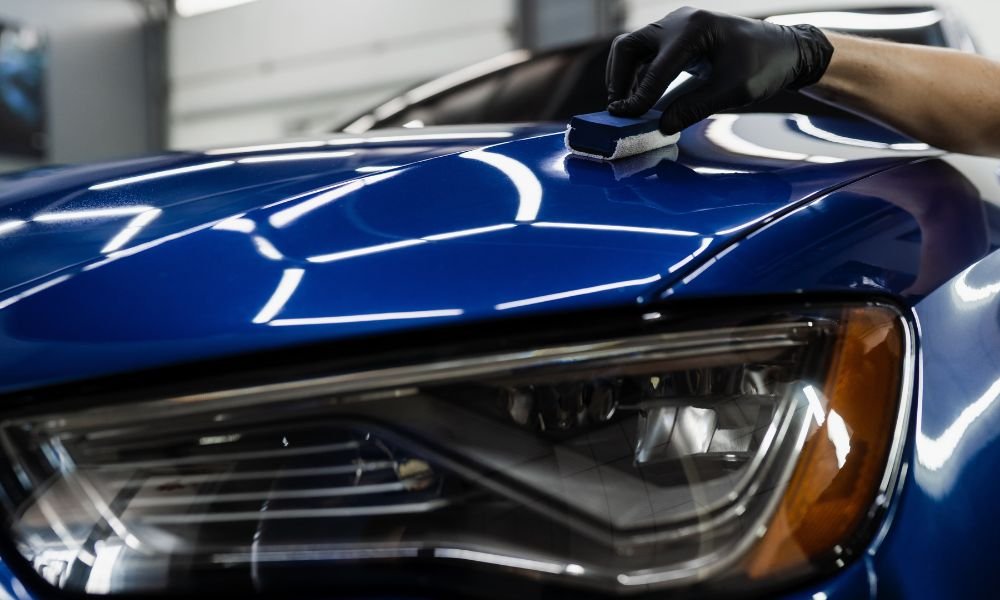Get expert car detailing for a full restoration.
Get expert car detailing for a full restoration.
Blog Article
A Comprehensive Overview to the Sorts Of Ceramic Layer on the Market
Ceramic coverings have actually emerged as a crucial remedy across various industries due to their special properties and applications. As we explore the unique characteristics and applications of these finishes, the effects for performance and durability come to be increasingly evident, raising concerns regarding which kind could finest suit your needs.
Recognizing Ceramic Coatings
Ceramic finishings are sophisticated protective remedies that have obtained popularity in various markets, particularly in vehicle and aerospace applications. These finishings consist of a fluid polymer that, when healed, develops a resilient, hydrophobic layer on the surface area of the substratum. This layer provides improved resistance to ecological pollutants, UV radiation, and chemical direct exposure, thus expanding the life and aesthetic appeal of the underlying material.
The basic part of ceramic coatings is silica, which adds to their firmness and resilience. The application procedure usually includes surface area prep work, application of the layer, and curing, which can be accomplished with warm or UV light. As soon as healed, ceramic finishes exhibit phenomenal bonding residential or commercial properties, permitting them to stick highly to a variety of surface areas, consisting of steels, plastics, and glass.
Along with their protective functions, ceramic finishings additionally provide convenience of upkeep. Their hydrophobic nature lowers the adherence of dirt and crud, making cleansing less complex and less constant. Overall, the adoption of ceramic finishings stands for a considerable innovation in surface security innovation, supplying both functional and aesthetic benefits across numerous fields.
Sorts Of Ceramic Coatings
Various kinds of ceramic coverings are available, each made to satisfy particular performance requirements and applications - Paint Protection Film. One of the most usual kinds include:
Silica-based Coatings: These coatings mostly contain silicon dioxide and are known for their longevity and chemical resistance. They are widely utilized in vehicle and commercial applications.
Titanium Dioxide Coatings: Renowned for their photocatalytic buildings, titanium dioxide finishes are often used in atmospheres where self-cleaning and antifungal buildings are preferable, such as in structure products and automotive surfaces.
Zirconia Coatings: Characterized by their high-temperature security and thermal resistance, zirconia layers are used in applications such as generator engines and high-performance auto parts.
Alumina Coatings: Showing exceptional firmness and thermal stability, alumina coatings are regularly used in wear-resistant applications, including reducing devices and commercial equipment. - Car Detailing
Crossbreed Coatings: Integrating the homes of different products, crossbreed layers use improved performance features, making them ideal for one-of-a-kind and demanding applications.
Each kind of ceramic coating serves unique objectives, permitting users to select one of the most suitable remedy based upon details environmental conditions and performance demands.
Advantages of Ceramic Coatings
Ceramic finishings, in particular, offer many advantages that make them progressively preferred among makers and customers alike. These coverings are resistant to scrapes, chemicals, and UV rays, ensuring that the underlying surface area stays safeguarded over time.
Along with toughness, ceramic finishings give superb hydrophobic buildings, permitting easy cleaning and maintenance. This water-repellent nature lessens the adherence of dirt, crud, and various other contaminants, which can prolong the visual charm and performance of the surface. Ceramic finishings can considerably enhance thermal resistance, making them perfect for applications that endure high temperatures.

Application Refine
When using ceramic coverings, a thorough technique is crucial to achieve ideal outcomes. A clean surface makes sure correct attachment of the coating.
Once the surface is prepped, the following step is to apply the ceramic covering. The coating should be applied in thin layers, as thicker applications can lead to irregular coatings.
After application, the finishing needs great post to read a particular treating time, generally varying from a few hours to a full day, depending upon the item. During this time, it is crucial to avoid exposure to dampness or contaminants. A mild buffing may be essential after curing to improve the gloss and eliminate any kind of high spots. Complying with these steps vigilantly will maximize the effectiveness and longevity of the ceramic coating, supplying a resilient safety layer for the surface area.
Maintenance and Long Life
To make sure the long life and efficiency of a ceramic coating, routine maintenance is essential. Ceramic layers, understood for their resilience and safety top qualities, call for certain treatment routines to maximize their life expectancy and efficiency. The initial action in maintenance entails regular cleaning with pH-neutral soap, staying clear of rough chemicals that can deteriorate the layer. It is recommended to clean the lorry routinely, ideally every two weeks, to stop the accumulation of contaminants that might jeopardize the finish's honesty.
In addition to regular cleaning, regular assessments are vital. Try to find indicators of wear or damages, such as hydrophobic properties diminishing or surface area blemishes. If necessary, a light polish might be put on renew the finish without stripping it away.
Furthermore, the application of a booster spray can improve the finish's hydrophobic results and recover its gloss. This is particularly beneficial for finishes that have actually remained in usage for an extensive duration. Ultimately, by adhering to these maintenance practices, one can significantly extend the life of a ceramic coating, making certain that it remains to supply optimum defense versus ecological variables and keep the visual appeal of the car.
Conclusion

Report this page